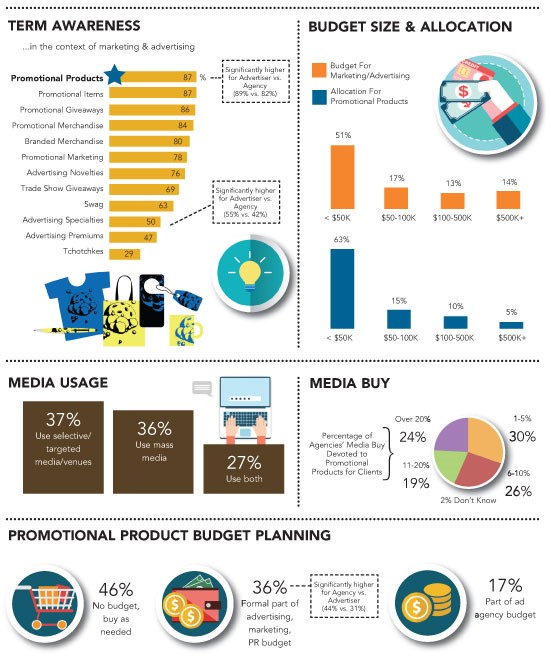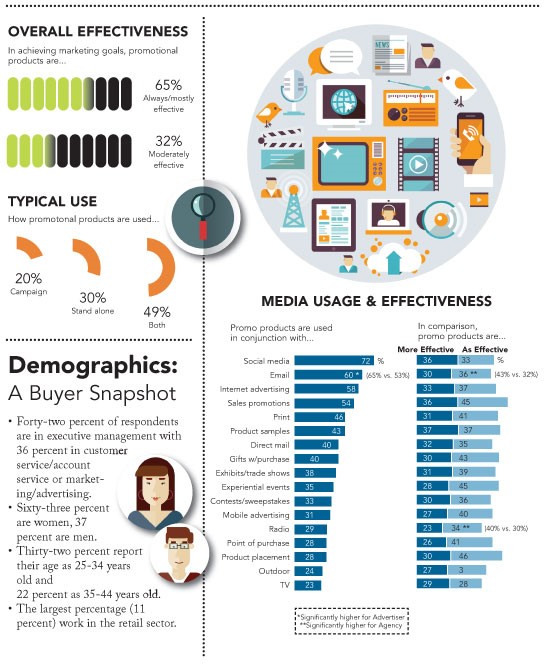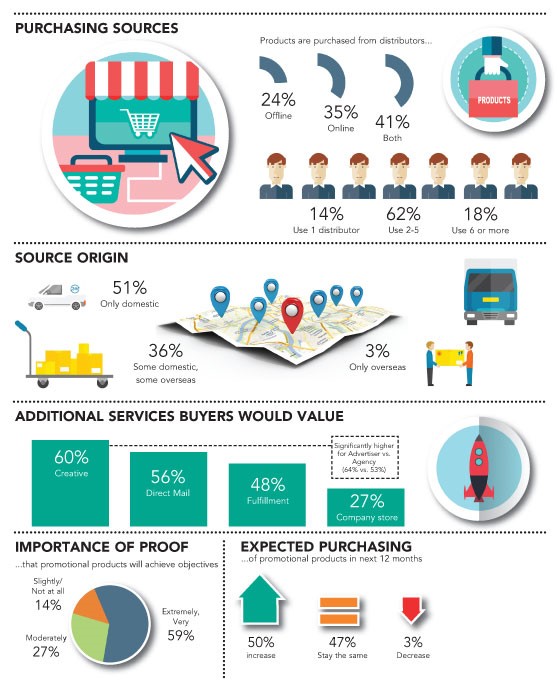An Exclusive Look At The Buying Behaviors Of Ad Agencies and Advertising Companies
Through the decades, promotional products have been proven again and again as one of the most highly effective advertising media for promoting a brand and influencing behavior. Some of the most interesting data to support the claim dates back to 1992—the result of an intercept study of air travelers at New York’s LaGuardia airport, where travelers pulled out logoed pens and key rings from their pockets and purses, and recalled stories about how they obtained them. These were extraordinary findings that since have been reconfirmed a number of times in similar studies—most recently with a follow-up intercept airport study in 2012.
This year, PPAI set out to study the market from a different perspective: to measure the medium’s effectiveness from the point of view of decision makers and influencers at ad agencies and advertising companies themselves. A total of 400 individuals—from 154 agencies and 246 advertisers—participated in a 15-minute online panel conducted in early April by Relevant Insights exclusively for PPAI.
While the findings spotlight some good news in terms of awareness, use and future expenditures, these results also point out a number of untapped opportunities for distributors to target, reach and educate their prospects to increase sales and reinforce the effectiveness of promotional products.
Key Findings: Awareness And Budget
•Nearly nine in 10 buyers of promotional products are aware of the term “Promotional Products.”
•At least four in 10 companies have a promotional products budget of $50,000 or more.
•For 72 percent of these companies, the promotional products budget is less than 20 percent of their total budget.
•Nearly half (46 percent) don’t have a formal budget for promotional products; they buy as needed.
•Agencies are more likely to have a promotional products budget (44 percent) than advertisers (31 percent). Still, the majority of agencies (76 percent) devote 20 percent or less of their media buy for clients to promotional products.
Key Findings: Promotional Products Effectiveness
•About half of advertisers and agencies measure the effectiveness of their marketing campaigns mainly through comparison of the number of inquiries and leads before and after a promotion, and by comparing year-over-year same-store, same-market sales.
•Sixty-five percent of promotional products buyers consider this medium always or mostly effective.
• Usefulness, ability to relate to industry-specific themes and uniqueness was most often cited as the most suitable features of promotional products.
• The ability to promote loyalty (83 percent), to reach targets efficiently (80 percent), and to be audience friendly (78 percent) was cited as the most important features of promotional products for buyers.
•Promotional products are also considered to be the most effective medium in terms of being audience friendly (74 percent), promoting loyalty (64 percent) and reaching target audiences effectively (63 percent), but are least effective at achieving the best CPM (cost per thousand) value (49 percent).
•Buyers cite promotional products as most often used in conjunction with social media (72 percent), email marketing (60 percent), internet advertising (58 percent) and in sales promotions (54 percent).
•More than a third of buyers consider promotional products more effective than product samples, social media and sales promotions.
Key Findings: Buying Behavior
•More buyers buy from distributors online (35 percent) than offline (24 percent), but many buy from both channels (41 percent).
•Sixty-five percent of those who buy from distributors use two to five distributors; only 14 percent give their business to a single distributor.
•Fifty-one percent of buyers buy only from domestic sources, while three percent buy exclusively from overseas.
•Sixty percent of buyers say distributors are more likely to add value if they offer creative services, and 56 percent indicate an interest in direct mail services. The interest in creative services was higher among advertisers (64 percent) vs. agencies (53 percent).
•Fifty-nine percent of buyers say providing evidence of effectiveness of the products or ideas offered is very to extremely important.
•Half of the buyers predict their purchase of promotional products will increase substantially in the next 12 months. Only three percent are expecting to decrease their buys.




Michaela Mora is principal of Relevant Insights, LLC. Tina Berres Filipski is editor of PPB.


